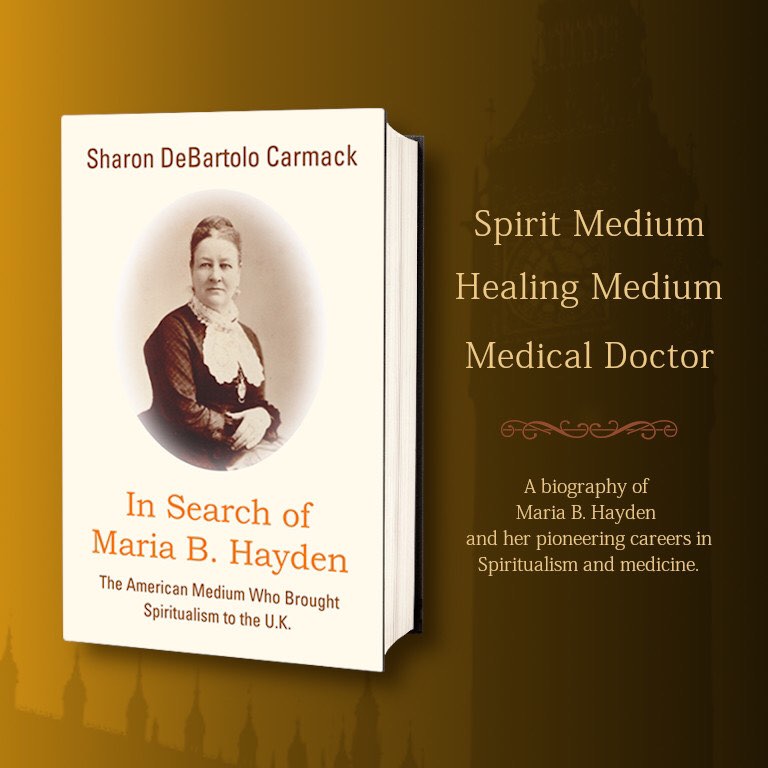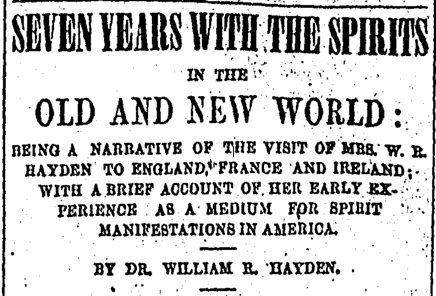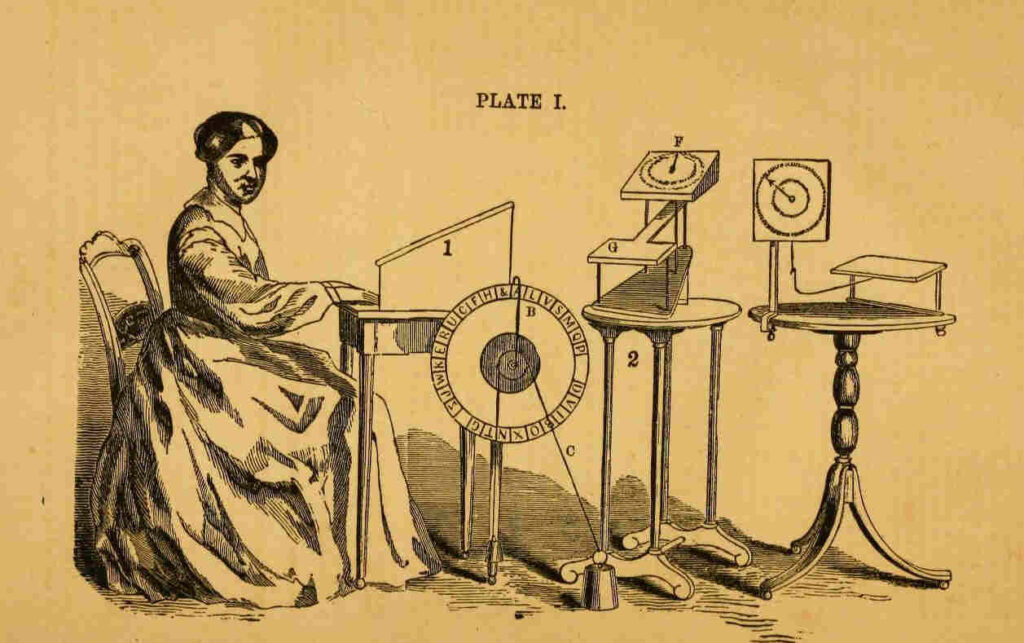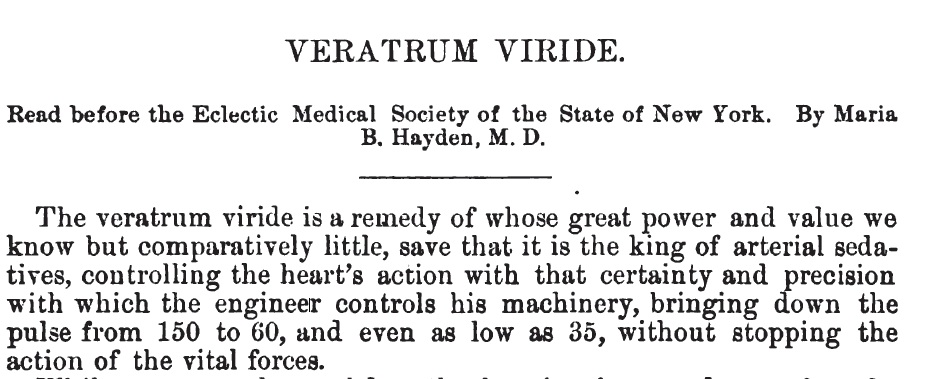
A Summary of the Life of Maria B. Hayden, M.D.
© 2020 Sharon DeBartolo Carmack, MFA, CG, DSNU
This article is protected by copyright and may not be reprinted in any form without permission of the author. She may be reached at sdcarmack@gmail.com.
Maria B. Hayden was the American medium who brought Spiritualism to the U.K. in 1852-53. Through her séances in England, Maria convinced many of the elite and upper classes that there is life after death. One such person was the already well-known Welsh social reformer and agnostic Robert Owen. After he converted to Spiritualism in his eighties, he was instrumental in endorsing and promoting Spiritualism and Maria’s mediumship in the British press.
Maria was never a public or trance speaker; she preferred to offer séances and private sittings. These private circles were the mainstay of the early Spiritualist movement with mediums often enduring test after test from skeptics. Yet many of these skilled and in-demand mediums like Maria have received little attention.
Maria B. Hayden née Trenholm was born 16 November 1824 in Nova Scotia, Canada. Her paternal grandfather, Matthew Trenholm (1757–1828?), hailed from Welbury, Yorkshire, England, and had immigrated to Canada, probably in 1772. Maria married Massachusetts-native William R. Hayden on 27 October 1850 in Boston, and she became a U.S. citizen by virtue of her marriage.
Based on the memoir William wrote, “Seven Years with the Spirits” and serialized in The Banner of Light in 1857, the spirits chose Maria as the medium during a séance in the spring of 1851. This communication transpired through raps. When asked who at the table was the medium, the spirits rapped when Maria’s name was called out.

From there, Maria used a piece of cardboard printed with the letters of the alphabet, as well as numbers from one to nine and zero. The sitter pointed to each letter on the alphabet or numbers then waited for a rap. No sound meant no, a rap meant yes. The sitter or a designated scribe put the letters together on paper to form words and sentences. Often Maria’s back was turned or her eyes were shielded from seeing the letters the sitter pointed to, so there was no doubt about her influencing the message.
Her reputation as a medium spread in Boston. Encouraged by William Hayden’s friend, George W. Stone, a popular American lecturer on electro-biology who had toured in England, he found Maria’s mediumship impressive and offered to sponsor the couple’s travel abroad. He felt sure the English would be equally interested in her gifts. Thus the Haydens embarked for England in September 1852.
While in England, reviews of her mediumship were mixed. Some people did all they could to trick and discredit her publicly in the press, but she also had a significant following likewise through the press and word of mouth. Along with Robert Owen, a few of the respected members of society who publicly endorsed the accuracy of her mediumship were Dr. John Ashburner, Sir Charles E. Isham, Sir Edward Bulwer Lytton, publisher Robert Chambers, Augustus and Sophia De Morgan, and many dukes and duchesses.
William and Maria concluded their time in England at the end of October 1853. Although her adversaries wanted to believe they had driven Maria back to America with their “venomous stings,” the more likely reason they left was Maria was pregnant again. Maria had already buried one child in America before embarking to England, and she was pregnant again when she had sailed to England a year prior. That pregnancy resulted in a miscarriage either en route or once she arrived. So it’s not surprising that she would want to head home before she was too far along in her third pregnancy. She gave birth in Boston on America’s Independence Day, 4 July 1854.
After Maria’s return to America, she continued to practice as a medium. She served as a test medium for Dr. Robert Hare, who invented an instrument known as the Spiritoscope to aid in communication. Maria was unable to see the scope that contained the letters of the alphabet and numbers 1 through 10. She rested her hands on the table, and the spirit vibrations operated through her hands to trigger the device, indicating the letters, which spelled out words and sentences. Sometimes these communications happened so quickly it was difficult for the scribe to keep up. Hare lectured and wrote about Maria and other mediums he tested in Experimental Investigation of the Spirit Manifestations, Demonstrating the Existence of Spirits and Their Communion with Mortals (1855). As in England, Maria’s reputation in America spread for the accuracy of her mediumship.

Maria’s abilities also leaned toward healing, and she began advertising her services as a “clairvoyant physician.” She earned a reputation for being extremely accurate in her diagnoses through the use of clairosympathy, a term she coined. As Maria described it, by merely “taking one’s hand, [Maria’s] mind is impressed with the exact state of the physical system in all its minutiæ.”
She then attended the Eclectic Medical College of New York City and graduated with honors and an M.D. degree at the age of forty-three in 1867. Maria was one of just three women in her class. Not only is this remarkable because of her gender and age, but she also had three young children living at home. She earned the respect of her male peers and served on several medical committees, gave lectures, and had her essays published in the Transactions of the Eclectic Medical Society of the State of New York.

Maria’s accomplishments did not end there. In 1877, Maria studied with Joseph Rodes Buchanan, M.D., the father of psychometry, who had coined the term in 1842 from the Greek psyche (soul) and metron (measure). Maria became an expert psychometrist, using it in her medical practice for diagnostic purposes. She gained a reputation for being a “psychometric genius.” Dr. Robert A. Gunn wrote in The Medical Tribune: A Monthly Magazine that Maria “was one of the most remarkable women that has ever graced the profession of medicine. Her analysis of morbid conditions of the human body were simply extraordinary for their lucidity.”
Maria passed into spirit at age fifty-eight on 11 February 1883 in Manhattan. An obituary appeared in Banner of Light, 3 March 1883, page 2:
Transition of a Pioneer Medium.
Mrs. Maria B. Hayden, M.D., whose transition occurred in New York, Sunday, Feb. 11th, was, in the earliest days of Modern Spiritualism, one of the most prominent of mediums for the production of phenomena at that time believed by but comparatively few to be of spiritual origin. Her residence in Boston, about the year 1850, was the principal resort of those who had the moral courage to investigate its claims, a large proportion of whom were convinced by what they there saw and heard, that the problem of a future life was solved beyond all shadow of doubt. Many private circles were there held, the members of which comprised some of the most intelligent minds of this locality. Professors from Harvard, clergymen from their studies, authors from their books, and editors from their sanctums made up these coteries; but so general was the public prejudice against the subject that few were willing to acknowledge that they had given any serious attention to it, much less that they entertained any thought of the possibility of its truth.
The tests of the personal identity of spirits given through Mrs. Hayden were in many instances very remarkable; some of them startling; and of themselves, had nothing else been received during the long period intervening between that time and this, sufficient to establish in every reasonable mind a conviction of the reality of a future life. In 1853, Mrs. Hayden’s field of labor was in England. Wonderful accounts of what had taken place had preceded her, and on her arrival there, she found herself famous; but it was a fame of no enviable nature. Though hundreds in this country were willing to testify to her reliability, she was at once, without trial, condemned as an impostor. The papers berated her in loud terms; “the Thunderer” [London’s Times] attacked her in italics, and periodicals of the standing of Household Words, at that time conducted by Charles Dickens, opened its pages to correspondents who told everything but the truth concerning her. Notwithstanding this, she opened the eyes of many to the realities of the unseen world and the possibility of communion with those of their friends who had gone thither.
Upon her return to this country Mrs. Hayden engaged in the study of medicine, and for many years prior to 1865, practiced under a license from the Eclectic College [sic], from which institution she finally graduated in that year [sic]. She stood high in her profession, and was known among her associates as “the Mother of Eclecticism.” Her practice was quite extensive. Among her former patients were Dr. Lorillard, brother of Pierre Lorillard, and Horace Greeley. She attended the latter for several years, and almost to the time of his death. The Herald of this city, at the close of a notice of her life says: “Mrs. Hayden was a woman of ripe culture, and numbered among her intimate friends many whose names are prominent in the world of literature.”
Note: Information in this summary is fully documented in In Search of Maria B. Hayden, M.D.: The American Medium Who Brought Spiritualism to the U.K., by Sharon DeBartolo Carmack, and coming soon on Amazon.com.
How to Cite This Summary:
Carmack, Sharon DeBartolo. “A Summary of the Life of Maria B. Hayden, M.D.” 2 November 2020. http://mariabhayden.net/about-maria-b-hayden/.